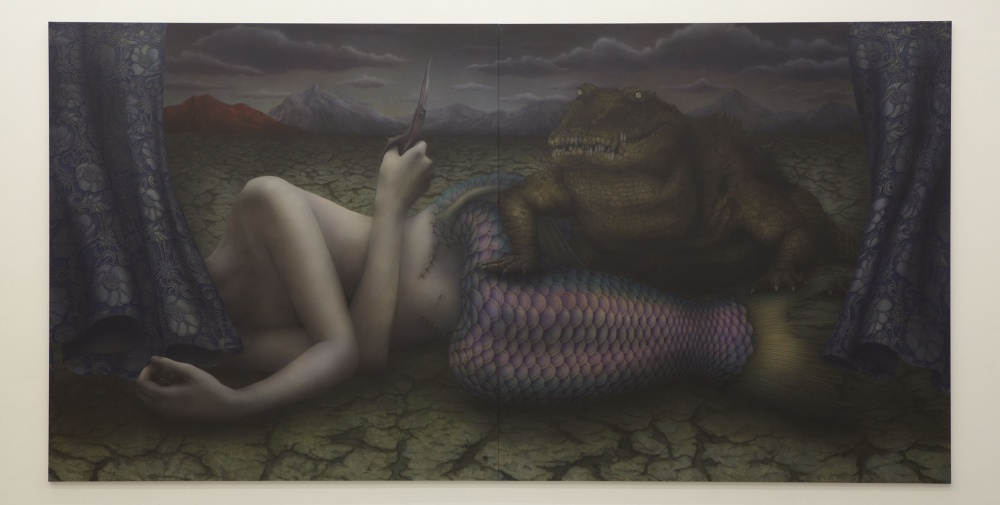<Introduction>
Paintings are the companions to which Satoko Nachi is comfortable to tell her own feelings. She faces herself, or the self in the past honestly, and weaves these various and complicated emotions into self-portraits. Those emotions are mostly derived from the real experiences of happiness and sorrow of love, or feelings for the particular beloved one. Nachi has made a number of large-scale paintings and delivered strong impacts to viewers. “I want the viewers to pay attention only toward the utopia I create on canvas when seeing my works. So, I make the paintings into a scale that fully occupies people’s visions,” said Nachi. As if writing novels, Nachi depicts symbolic motifs in great details expanding on extensive pictorial planes of the canvas. The crystallized emotions and powerful energies are vividly speaking to the viewers.
Stories of her friends are Nachi’s another subject. This is a series that Nachi would like to show her friends their beautiful traits and charms discovered only from her viewpoint. Different from the works where she goes deeper into herself, Nachi is able to depict the emotions while keeping calm. Therefore this series is important in her artistic practice to stay in balance.
Nachi completes her works with enormous time and concentration. They embrace elements that can be considered as feminine, such as purity and romanticness, as well as being emotional almost close to insanity. However, what seizes the viewers are the pain and solitude that commonly exist in human beings beyond gender, as well as nobleness, strength and beauty, which brightly shine in the figures she paints.
<Concept>
Since her last solo exhibition in 2010, Nachi has explored her inner side more and condensed expressions in her recent works. This exhibition features approximately 5 recent works, including the nearly 5 meters wide painting entitled “MANAMI”, as well as other series such as self-portrait, portrait of a friend and photography. What is intriguing is that Nachi, who usually paints portraits with emphasis on facial expressions, has let the face covered for the first time. This has unveiled deepened complexity in composition and new development in Nachi’s practice.

